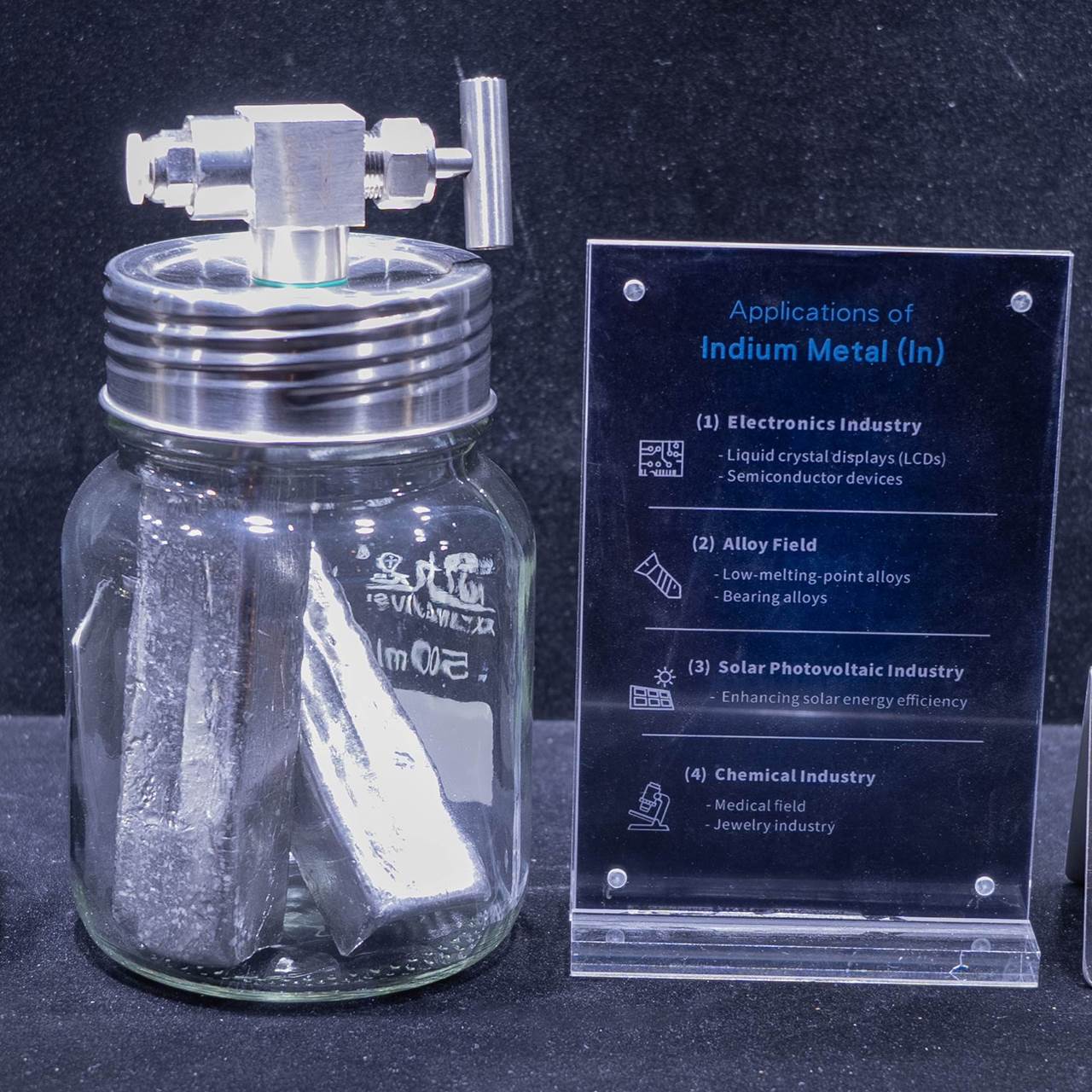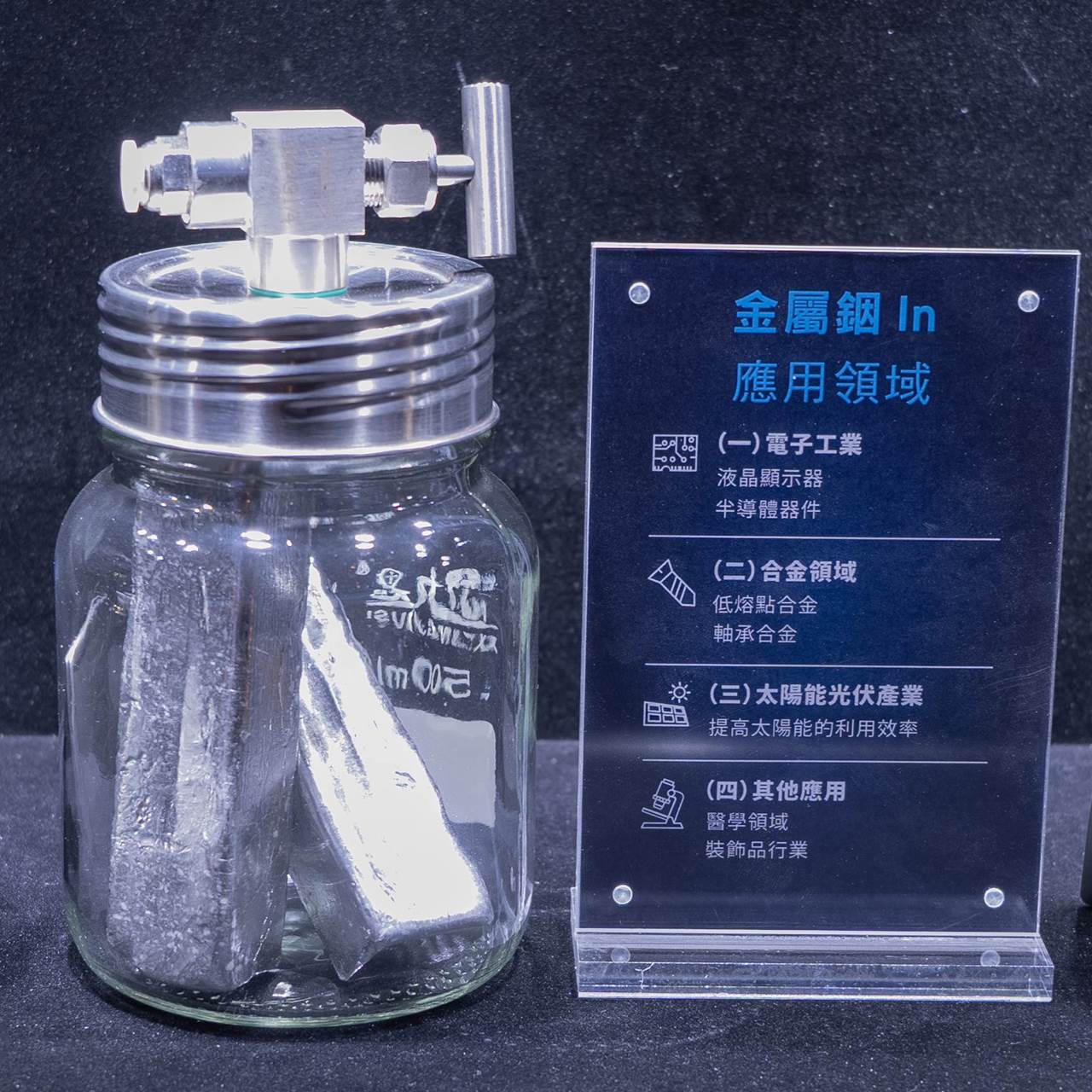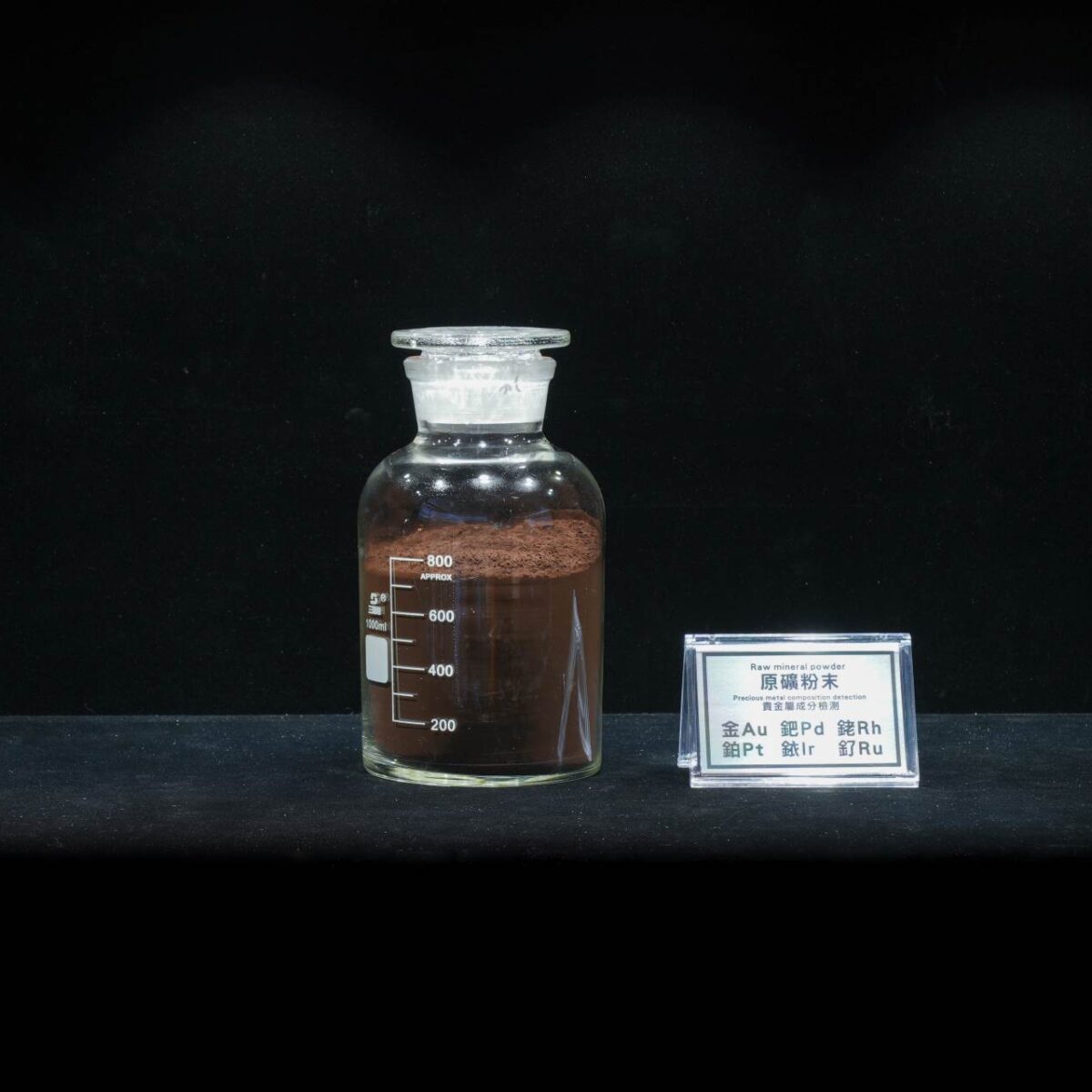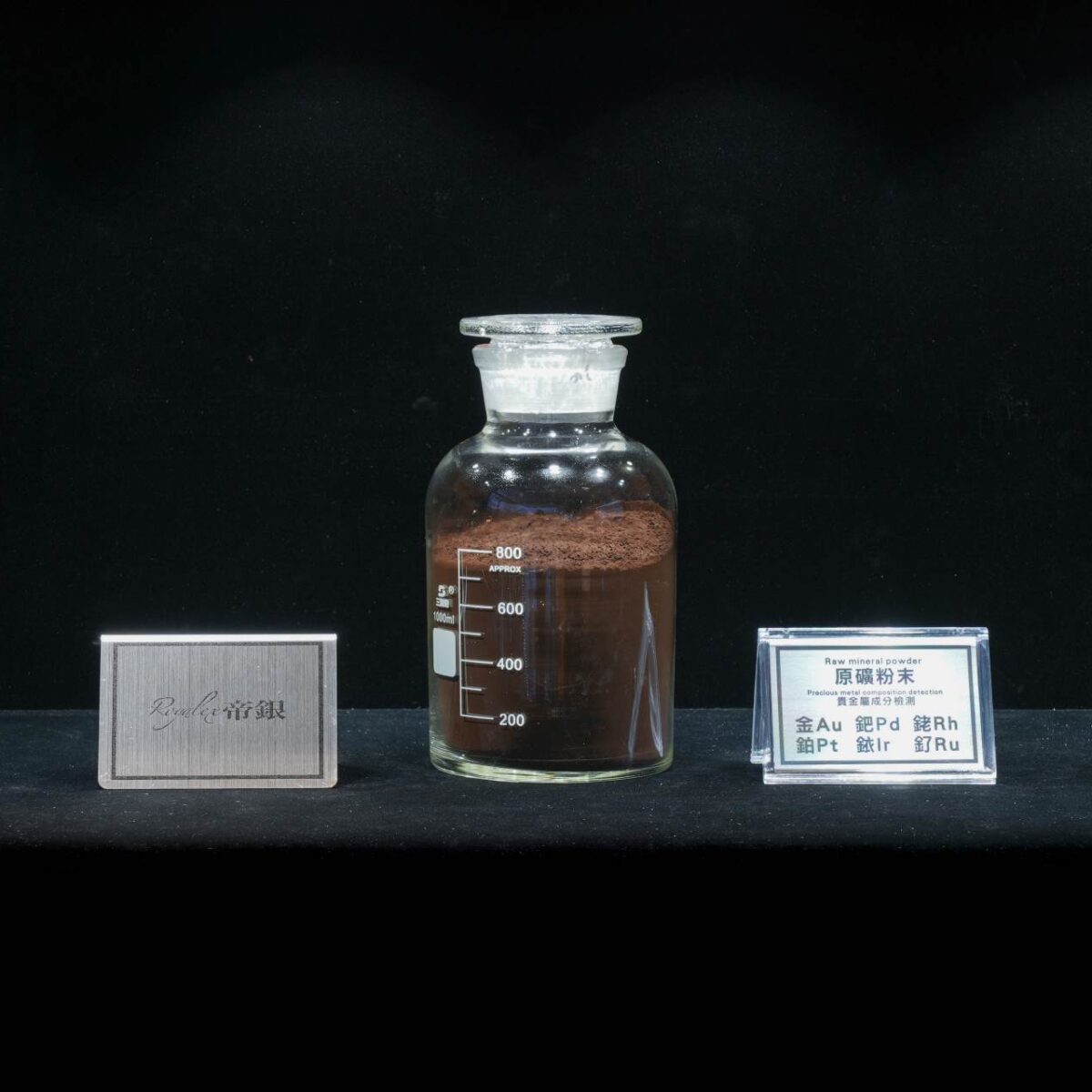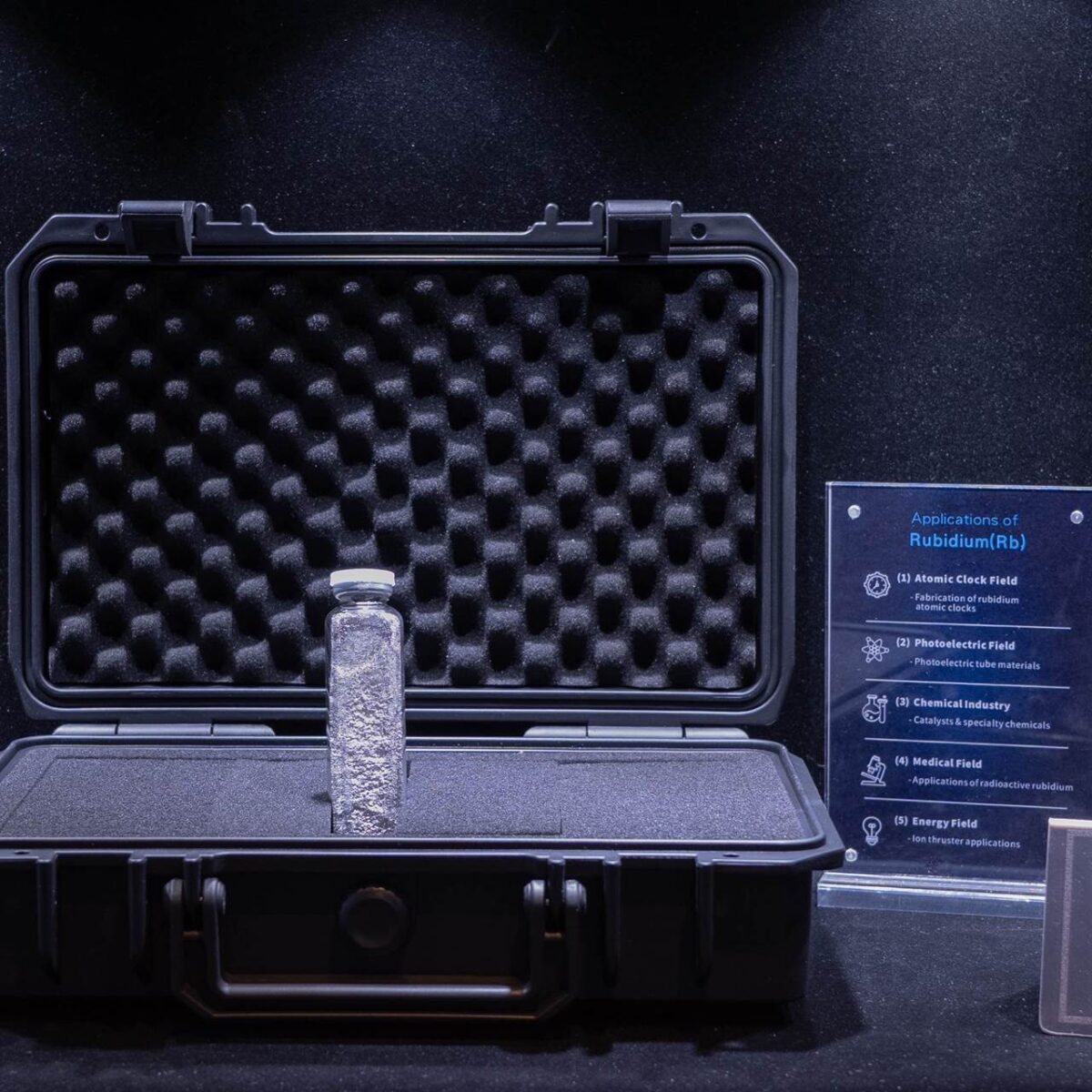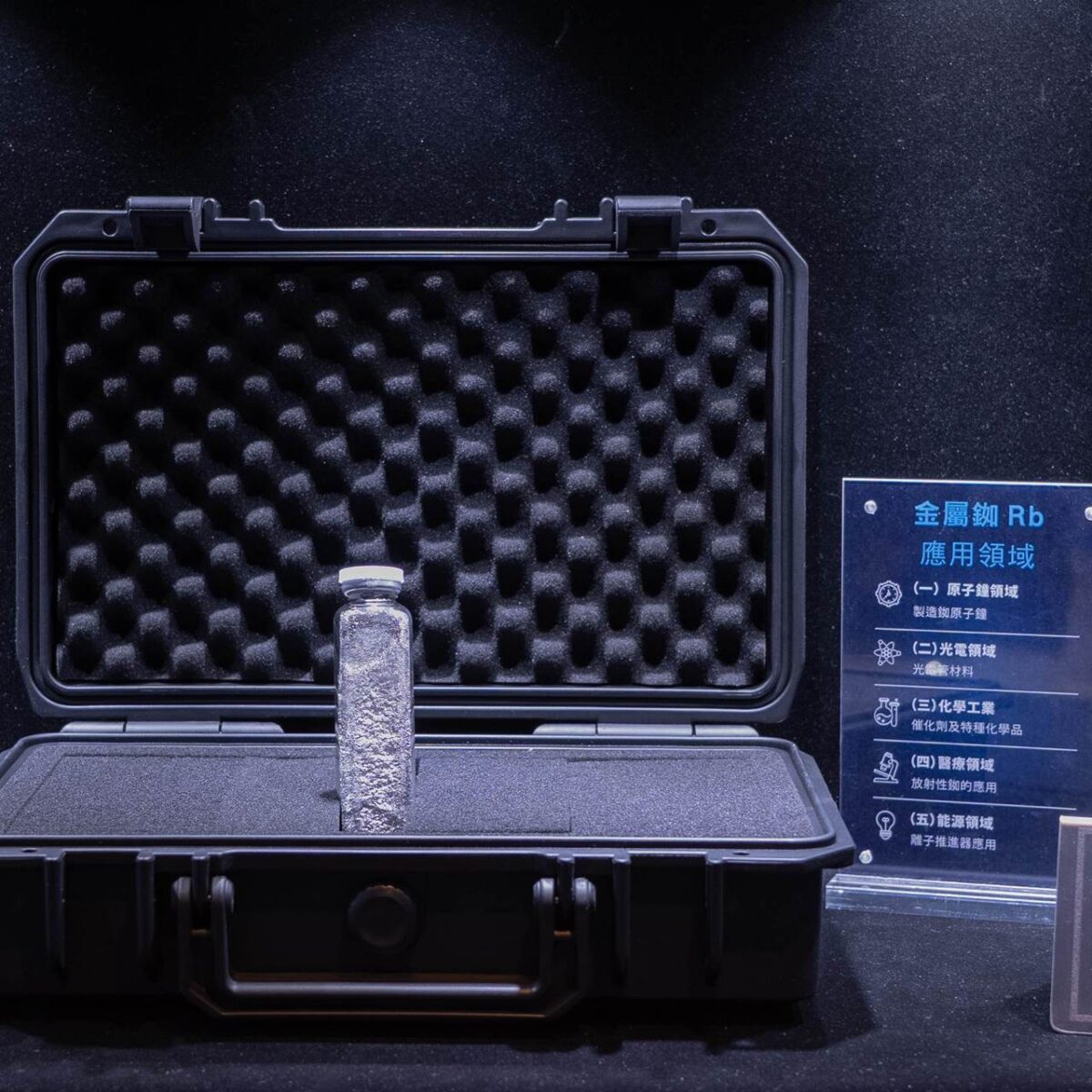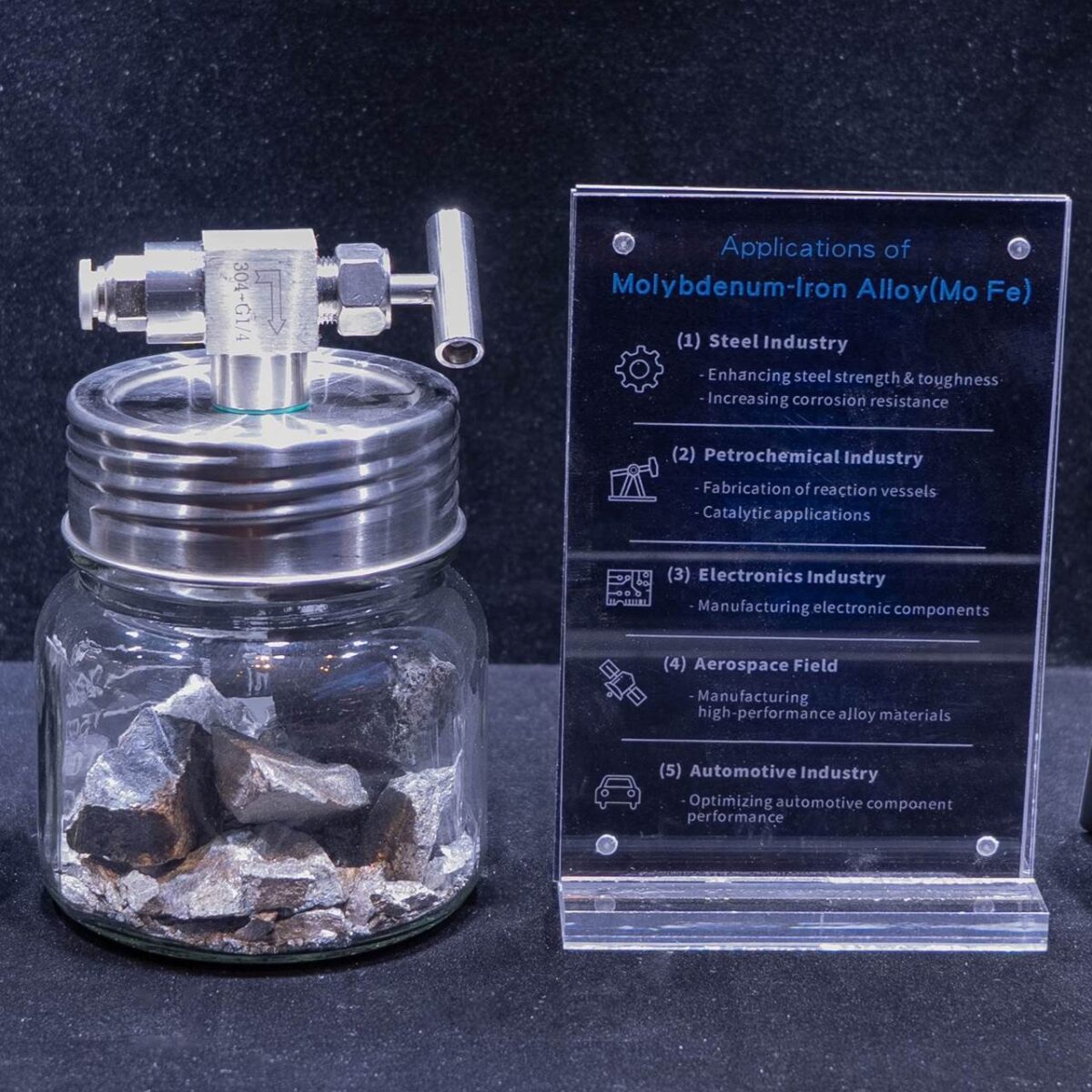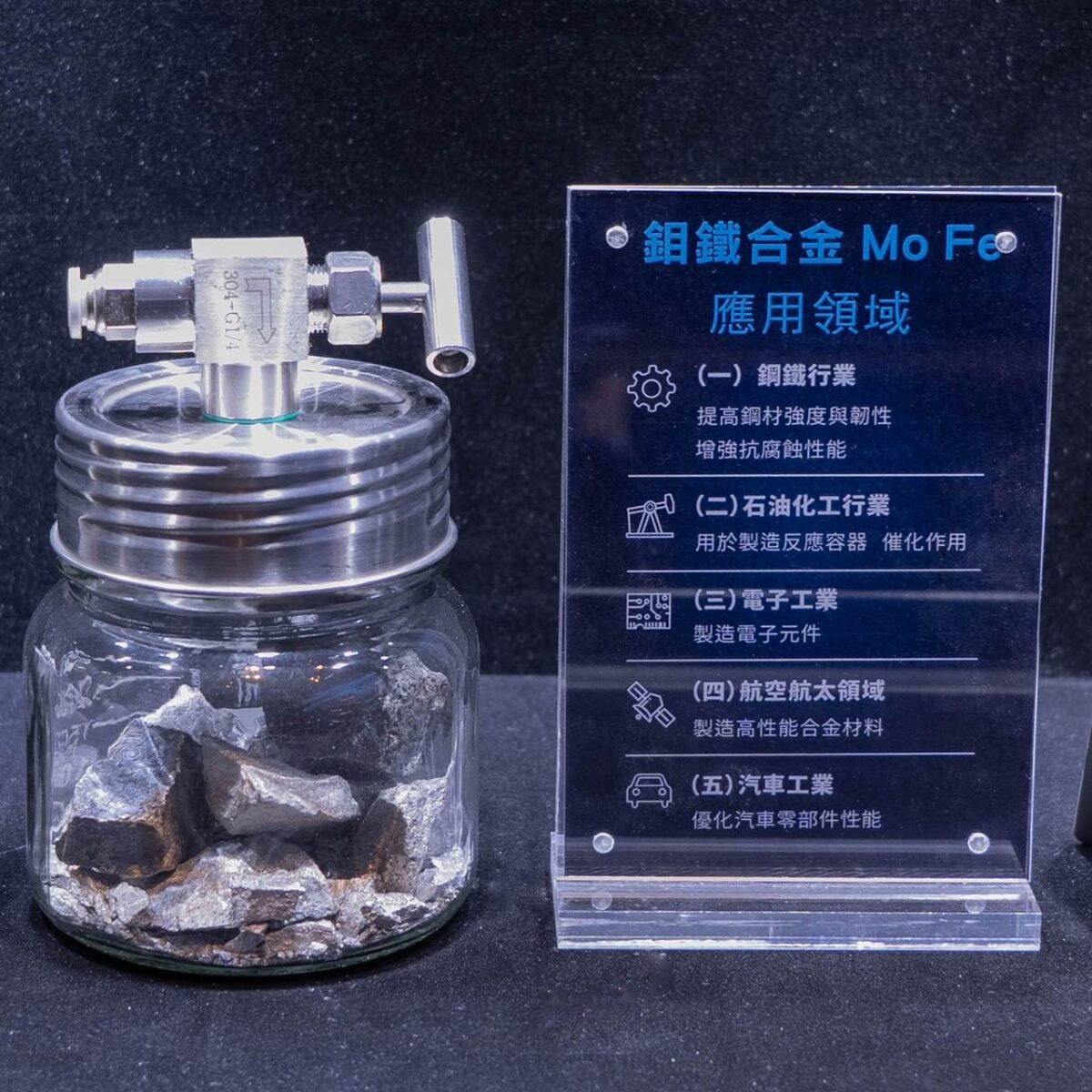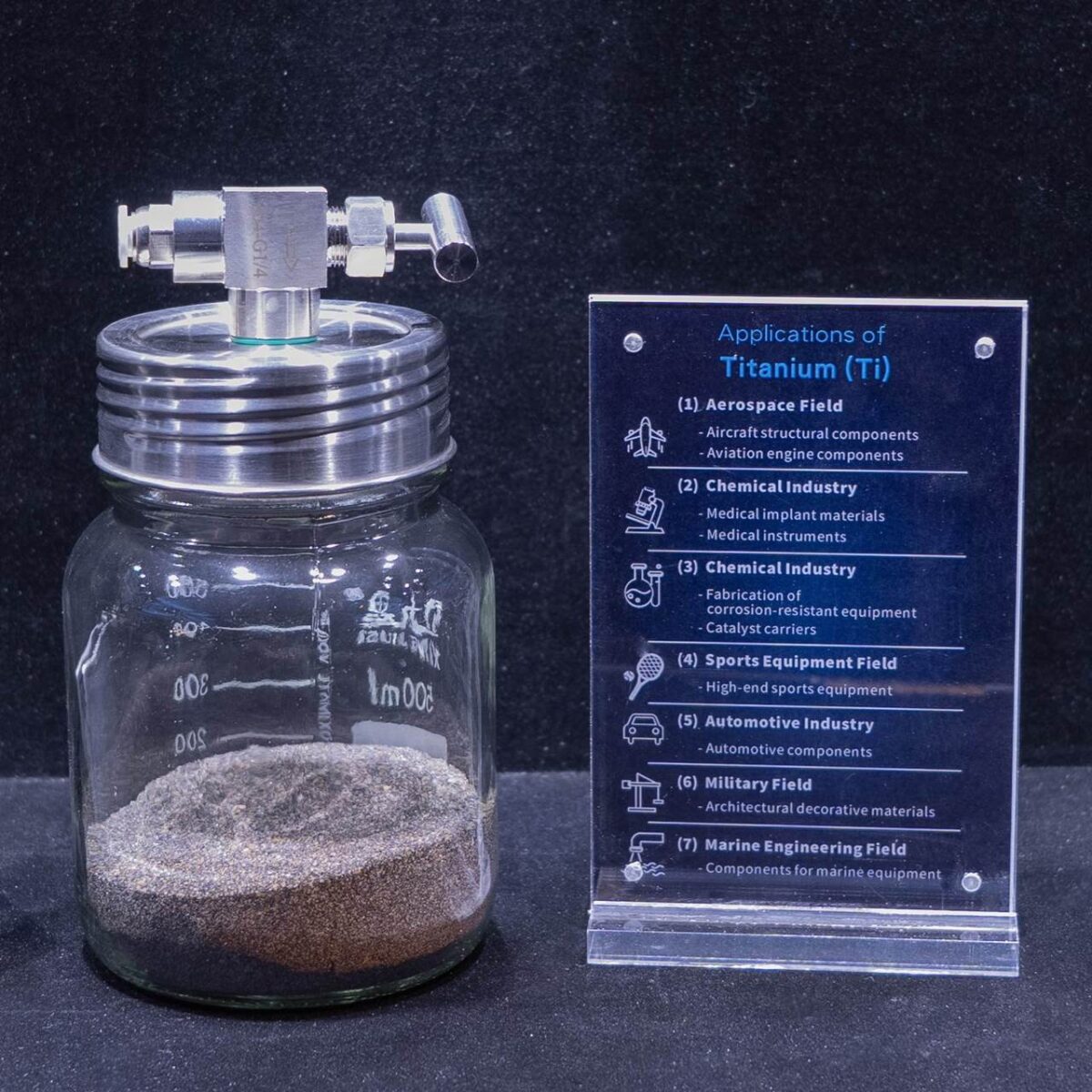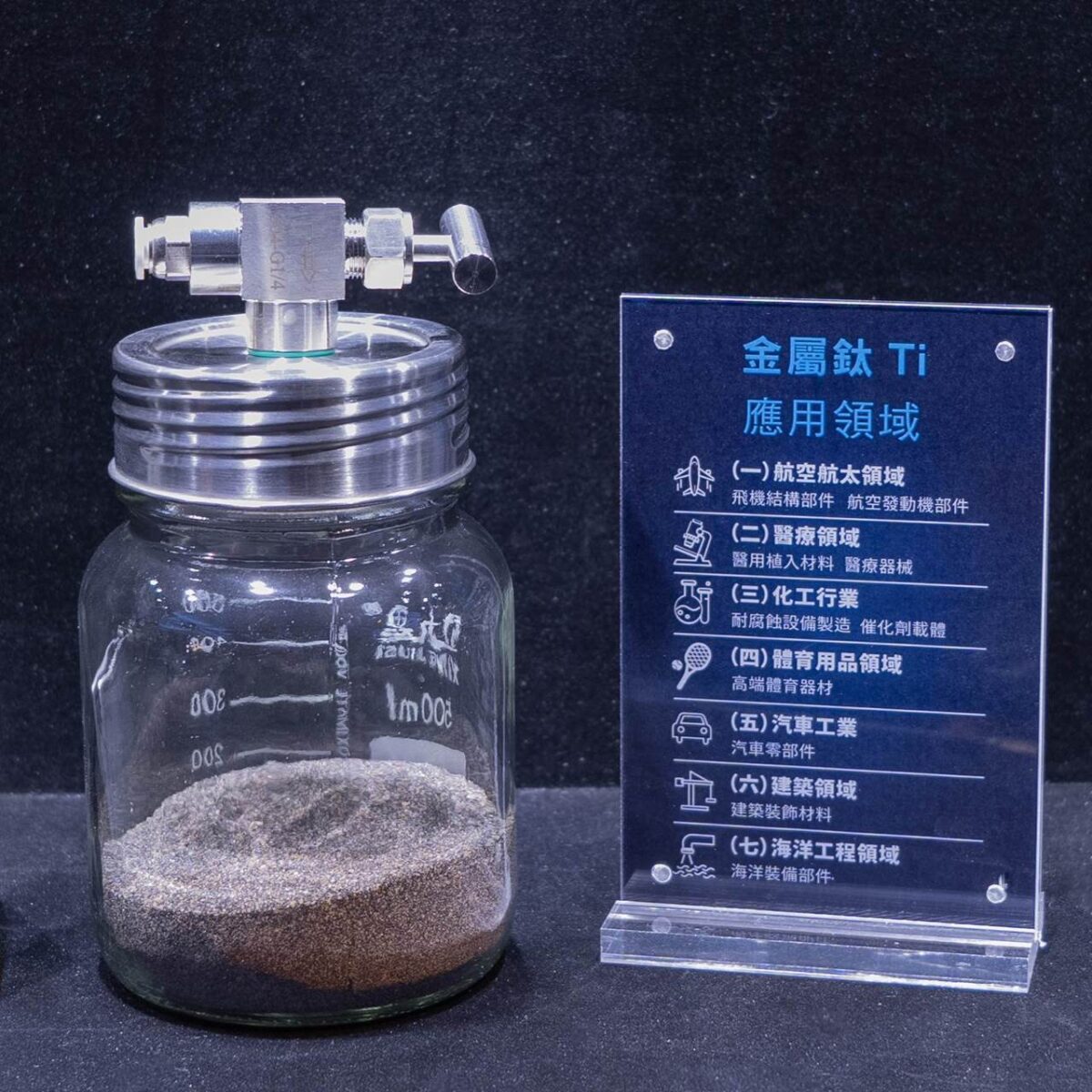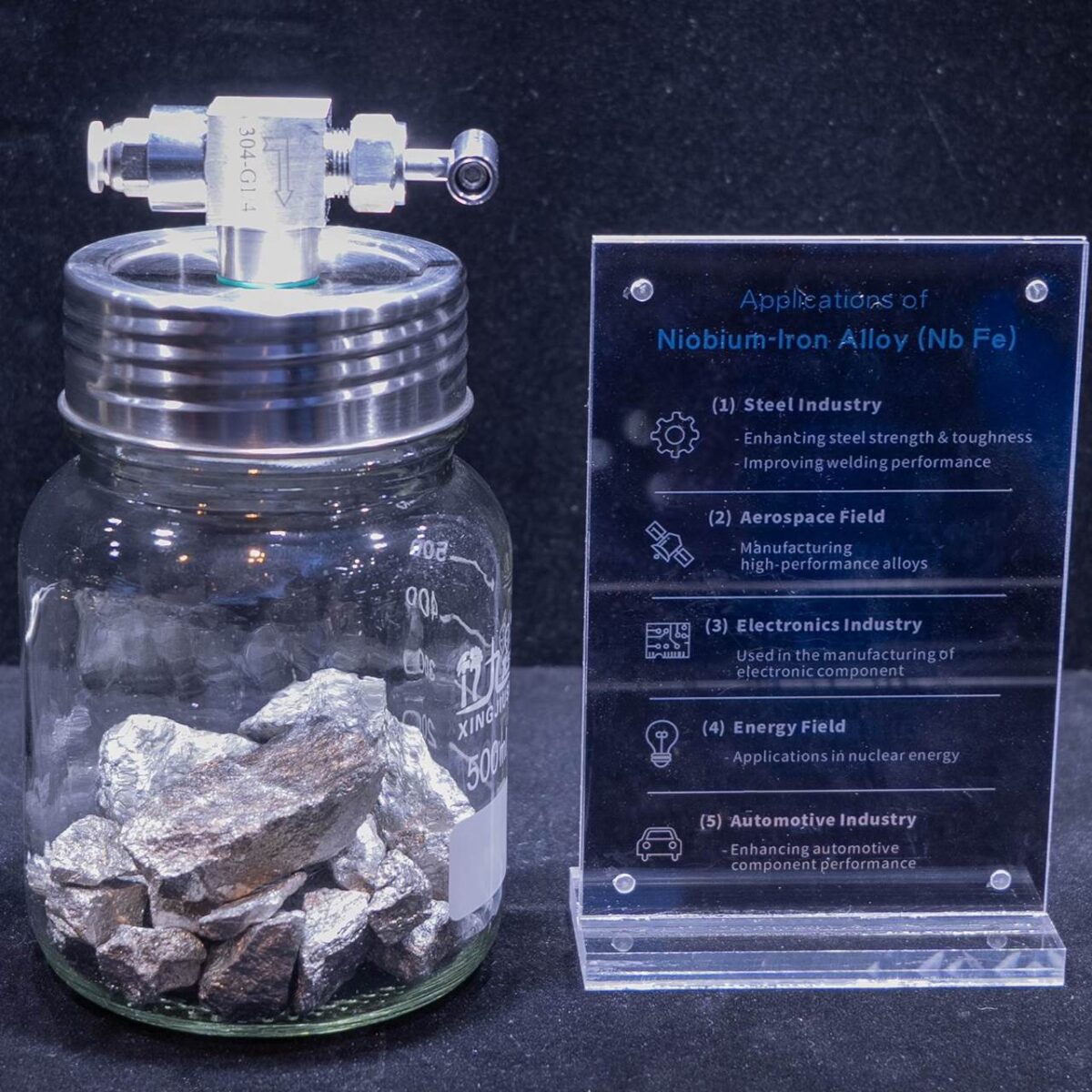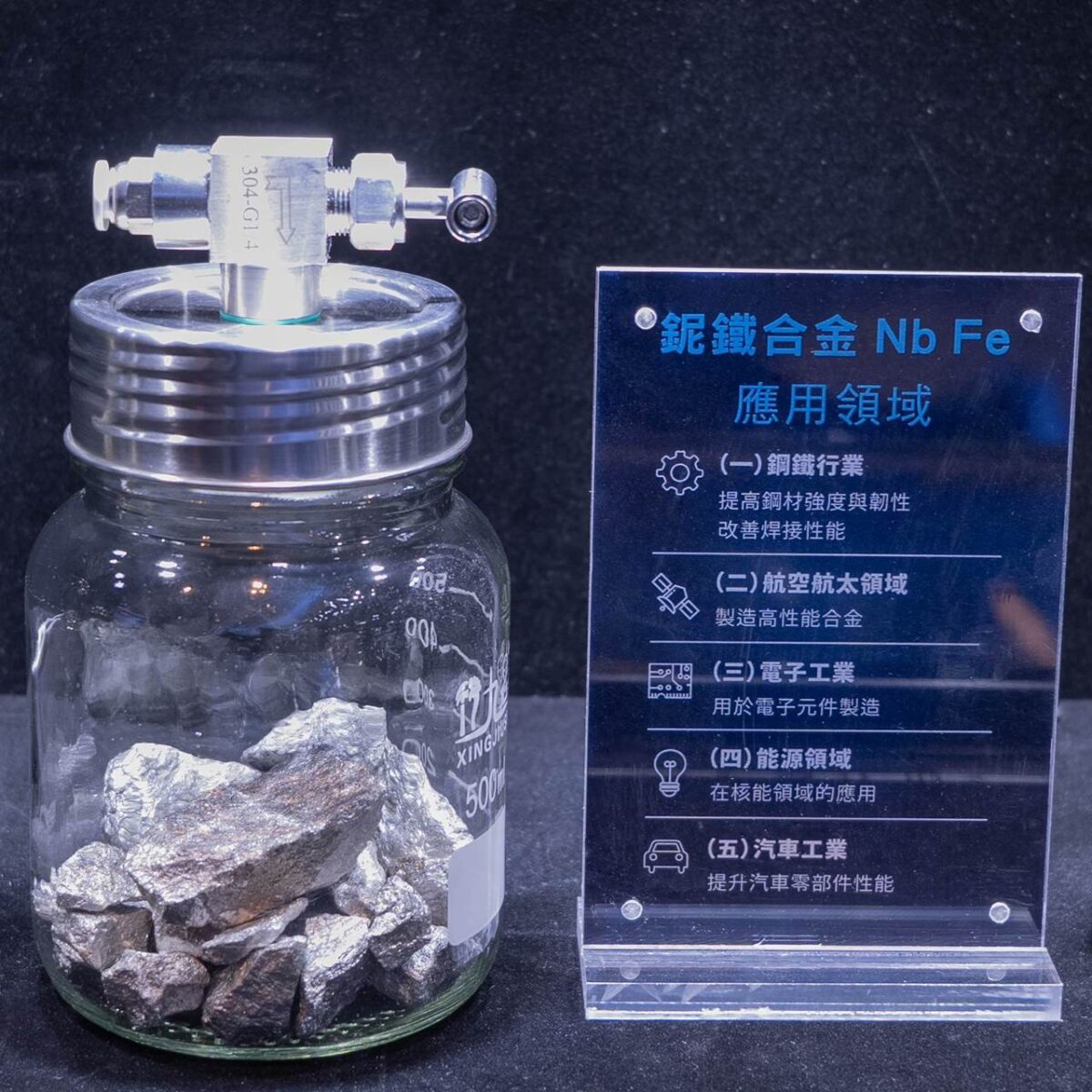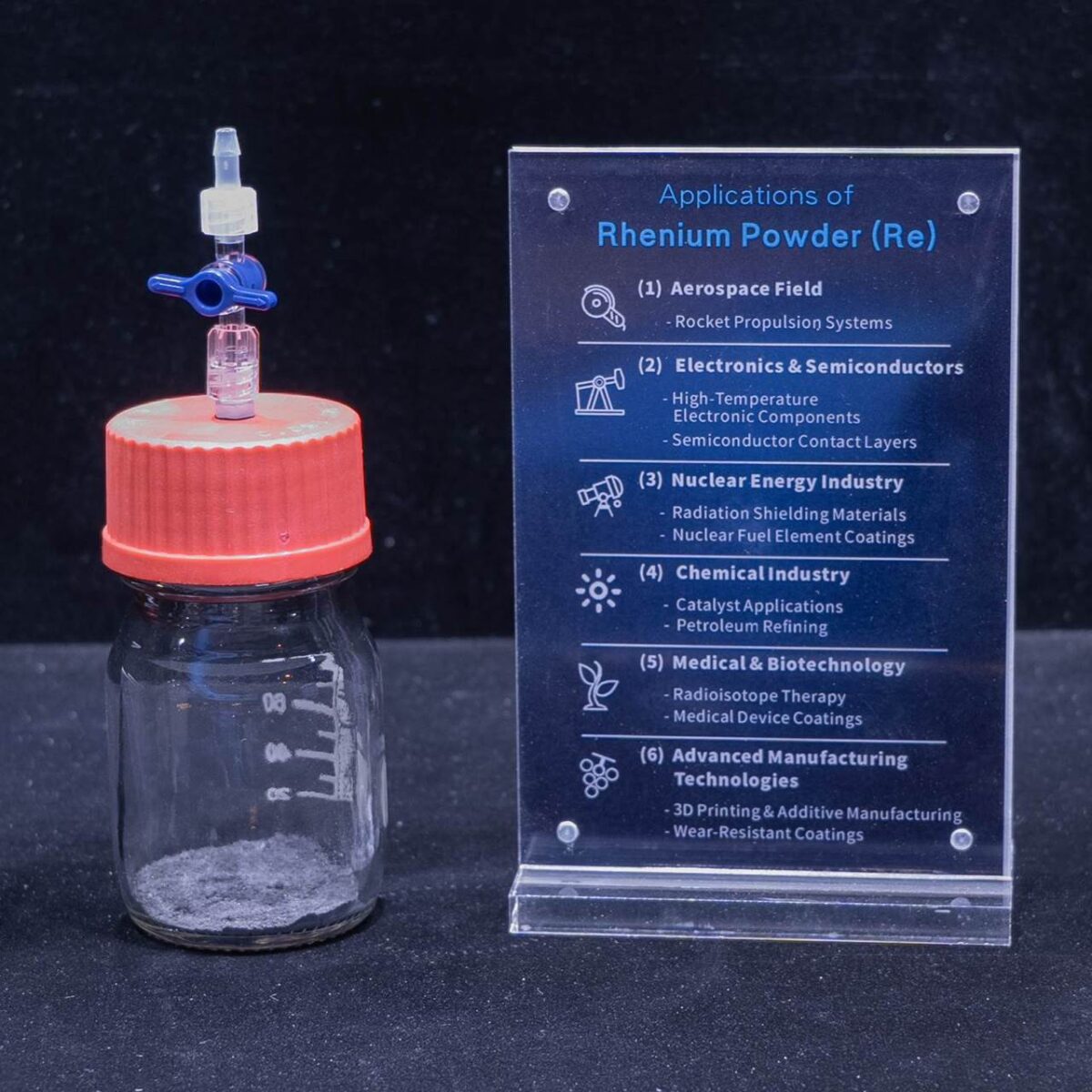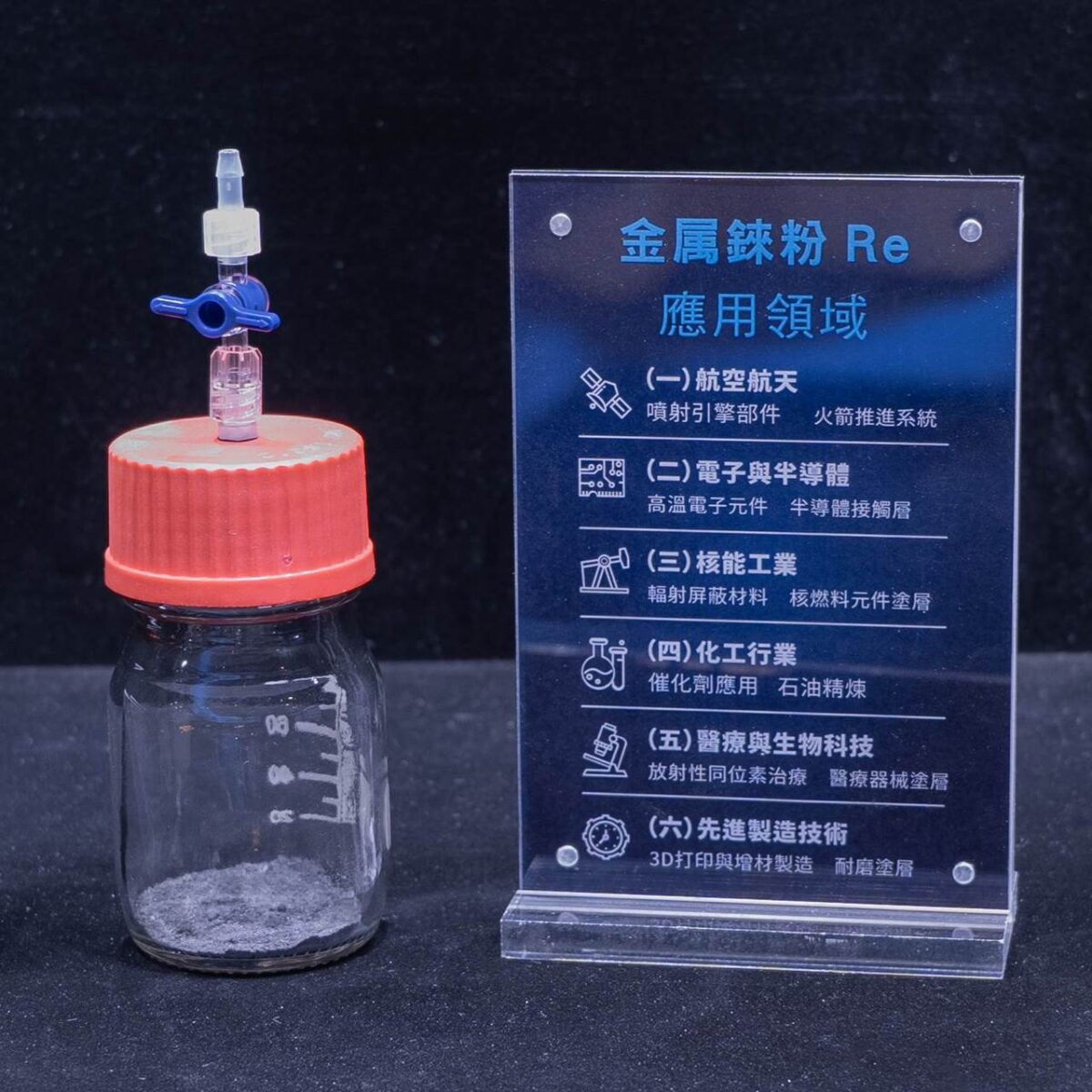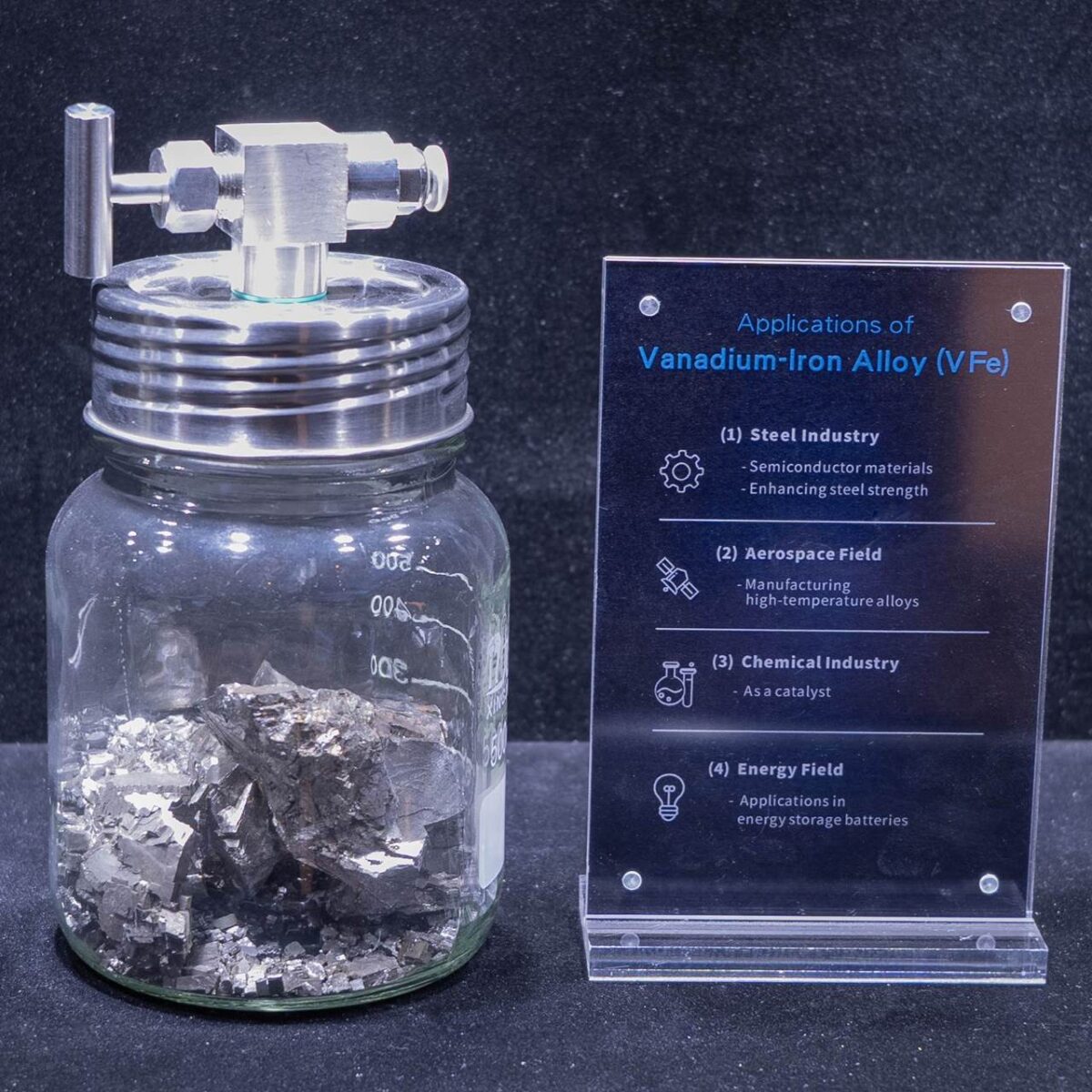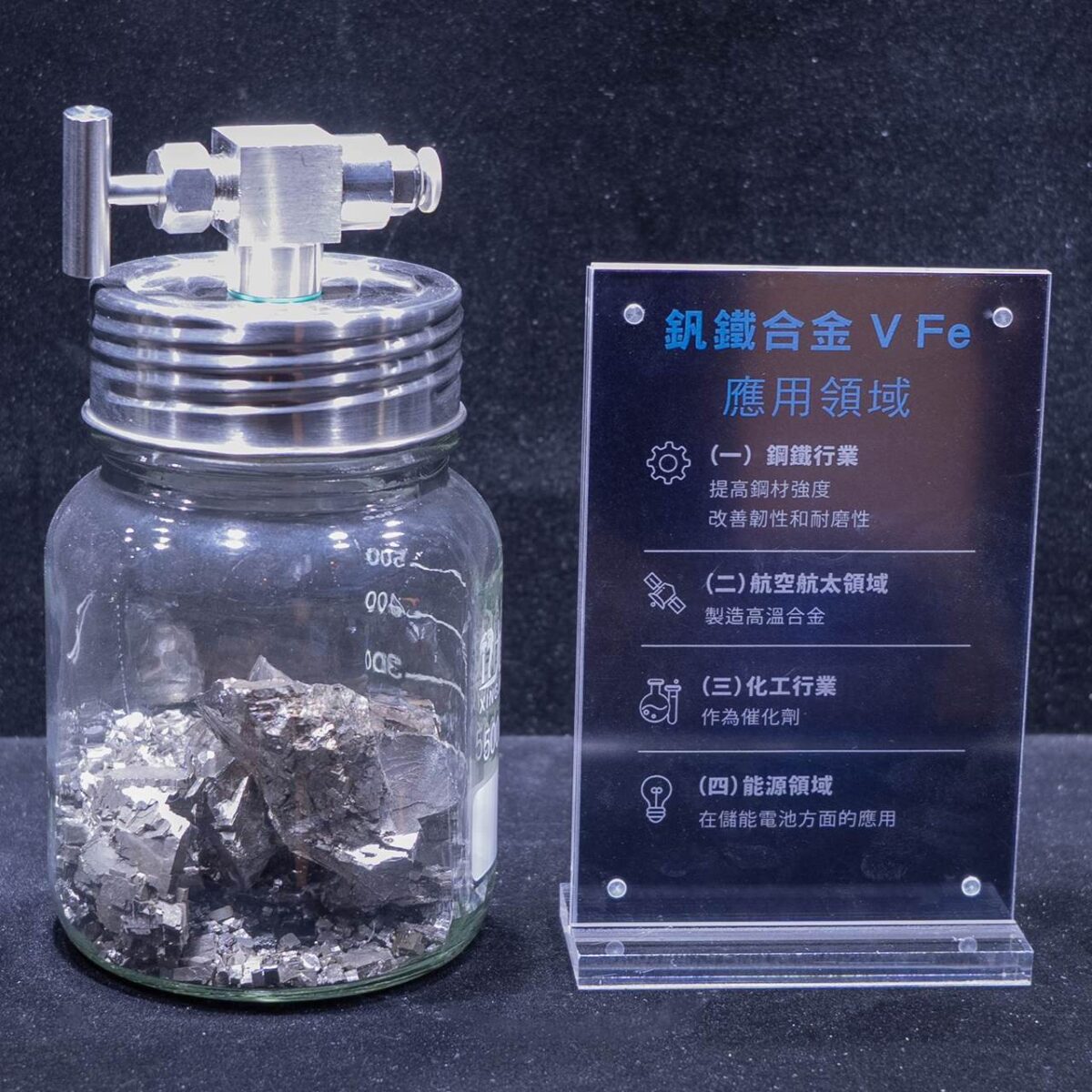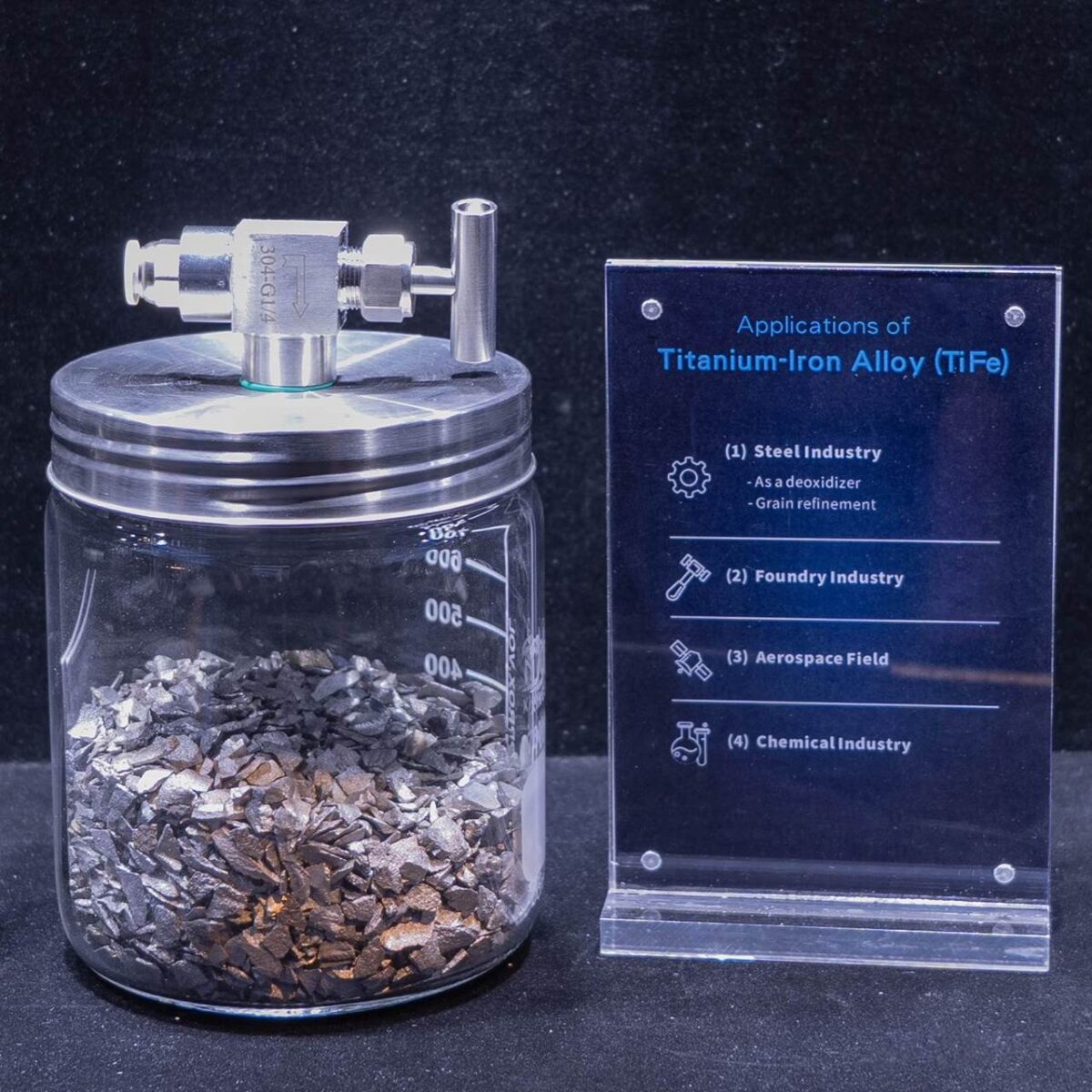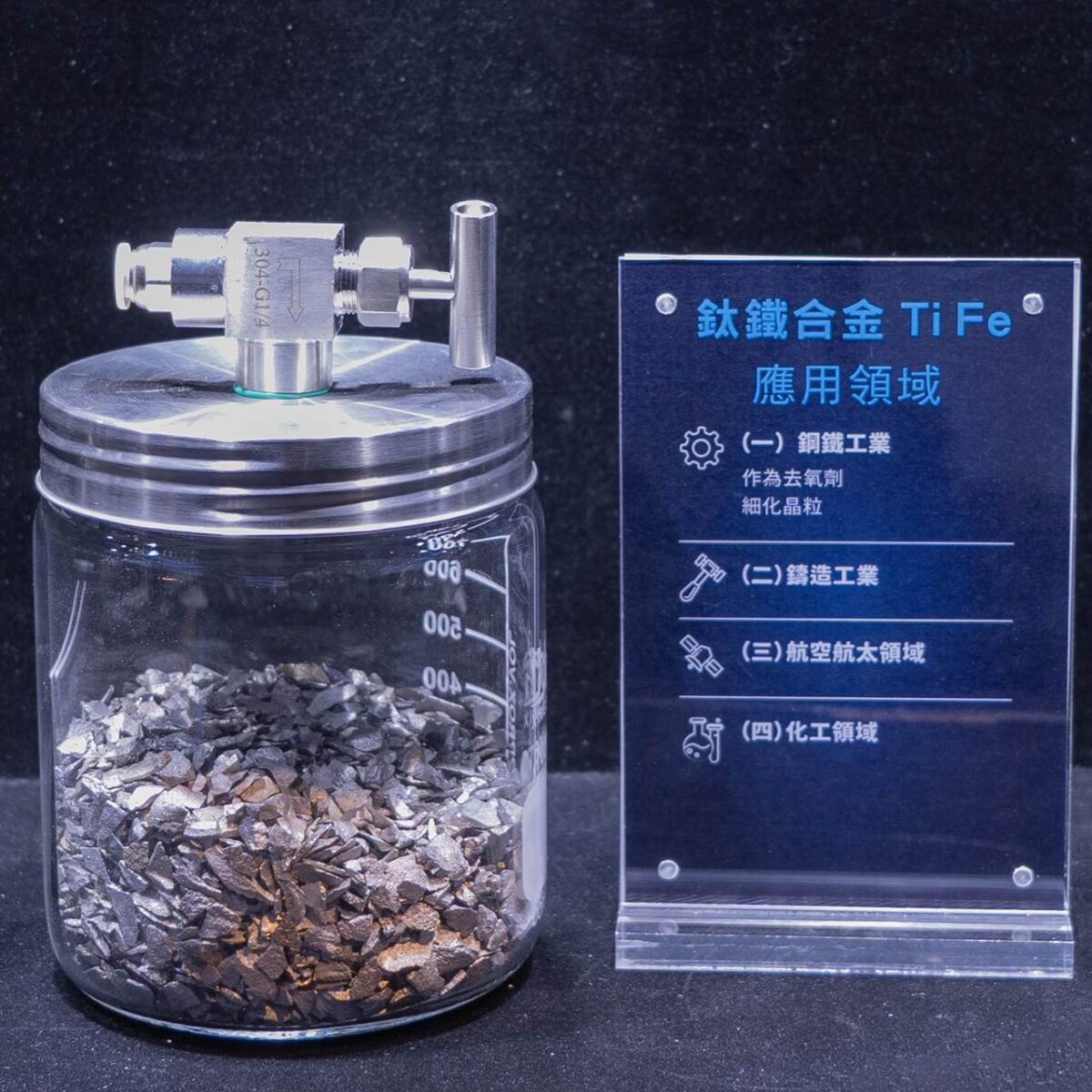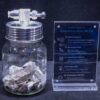Melting and Boiling Points
Indium has a relatively low melting point of 156.61°C and a boiling point of around 2080°C. This low melting point allows indium to play a special role in some low-temperature alloys and welding materials, while its high boiling point ensures a certain stability in high-temperature environments.
Density and Hardness
With a density of 7.31 g/cm³ and a low hardness (only 1.2 on the Mohs scale), indium is quite soft.
Ductility and Electrical Conductivity
Indium is ductile and can be pressed into very thin sheets. It is also a good conductor of electricity, with an electrical conductivity of about 11.6×10⁶ S/m, making it important in the field of electronics.
Oxidation States and Reactivity
Indium typically exhibits oxidation states of +1 and +3 in compounds, with the +3 state being more common. It is relatively stable in air but reacts with oxygen when heated to form indium oxide (In₂O₃).
Reactions with Acids and Bases
Indium reacts with acids; for example, it reacts with dilute hydrochloric acid to produce indium chloride (InCl₃) and hydrogen gas. However, it is relatively stable towards bases and does not easily undergo chemical reactions in common alkaline solutions.
Electronic Industry
Liquid Crystal Displays (LCDs)
Indium is a key material for manufacturing transparent conductive electrodes (ITO, indium tin oxide) in LCDs. ITO films have high transparency, good electrical conductivity, and chemical stability. In LCD screens, ITO films can effectively conduct electricity, allowing liquid crystal molecules to change their alignment under the influence of an electric field, thus enabling image display. Approximately 70% of indium is used in this field.
Semiconductor Devices
In the semiconductor field, indium is used to manufacture some special semiconductor compounds, such as indium phosphide (InP) and indium arsenide (InAs). These compounds have excellent electrical properties, such as high electron mobility and direct band gaps, making them ideal materials for manufacturing high-speed electronic devices and optoelectronic devices (such as laser diodes and photodetectors).
Alloy Field
Low-Melting-Point Alloys
Indium can form low-melting-point alloys with other metals. For example, Wood’s alloy, composed of indium, bismuth, tin, and lead, has a melting point of around 70°C. This low-melting-point alloy is used in fire protection devices and fusible elements in automatic sprinkler systems. When the temperature rises to the alloy’s melting point, the alloy melts, triggering the relevant safety devices.
Bearing Alloys
Adding indium to some bearing alloys can improve the alloy’s corrosion resistance and lubrication properties. In high-speed rotating bearings, indium alloys can reduce friction and wear, extending the service life of the bearings.
Solar Photovoltaic Industry
Other Applications
Medical Field
Some radioactive isotopes of indium (such as ¹¹¹In) are used in medical imaging (such as single-photon emission computed tomography, SPECT). By injecting drugs labeled with radioactive indium into the human body, its radioactive signals can be used to locate lesions or observe the function of organs.
Decorative Industry
Due to its silvery-white appearance, indium can be used to make decorative coatings in some high-end decorations and jewelry, adding a metallic luster and texture to the items.
Related products
Rare Metals
Rare Metals
Rare Metals
Rare Metals
Rare Metals

